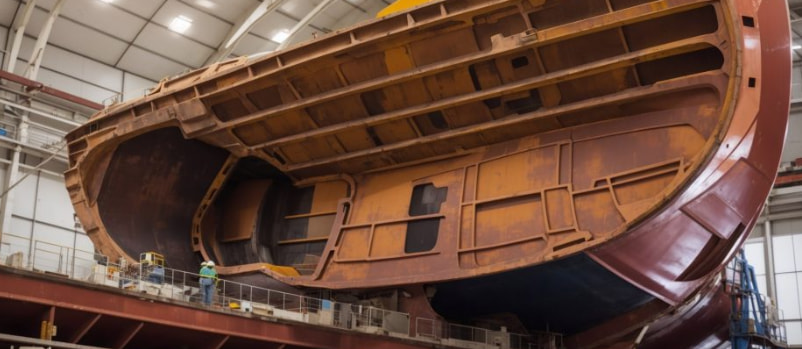A Brief Talk on Alloy Steel
572Alloy steel is a durable, high-performance material made by adding elements like chromium, nickel, and molybdenum.
View detailsSearch the whole station

Choosing the right steel grade is a critical decision in shipbuilding and offshore engineering. Among the commonly used grades under the ASTM A131 standard, AH32, AH36, and AH40 steel plates stand out for their balance of strength, toughness, and weldability. While all belong to the same family, their differences in mechanical properties, equivalent standards, and applications make each grade suitable for specific project needs.
For steel distributors, traders, and shipbuilding procurement managers, selecting the right grade isn’t just about technical specs—it’s about balancing cost, availability, and project requirements to maximize value and ensure on-time delivery.
AH32 steel is a mild-strength shipbuilding steel grade widely used for hull structures and general ship construction.
Equivalent Standards: EN S275, DIN St44, JIS E32.
Typical Applications: Small and medium-sized vessels, ferryboats, and deck structures in moderate sea conditions.
AH36 steel is a high-strength grade with better performance than AH32, offering improved toughness and wider usage in larger vessels.
Common Equivalents: EN S355, LR AH36, DNV AH36.
Typical Applications: Cargo ships, bulk carriers, offshore wind towers, and other heavy marine structures.
AH40 steel belongs to the extra-high-strength category, designed for demanding offshore and deep-sea projects. It offers higher yield strength compared to AH32 and AH36.
Equivalent Grades: EN S420, LR AH40, RINA AH40.
Typical Applications: Large container ships, oil tankers, LNG carriers, offshore oil & gas platforms, and naval vessels.
| Grade | Yield Strength (MPa) | Tensile Strength (MPa) | Typical Applications | Procurement & Sourcing Advice |
|---|---|---|---|---|
| AH32 | ≥ 315 | 440–590 | Small vessels, ferries, general hull structures | Best for cost-sensitive projects. High market availability, fast delivery on standard sizes. Ideal for distributors targeting small to medium shipyards. |
| AH36 | ≥ 355 | 490–620 | Cargo ships, bulk carriers, offshore structures | The most balanced and widely used grade. Maintain high stock levels. Highest demand from global cargo ship and carrier projects. |
| AH40 | ≥ 390 | 510–650 | Tankers, LNG carriers, offshore platforms | For specialized, high-value projects. Longer lead times may apply for thick plates. Confirm certification (e.g., offshore standards) with supplier early. |
When sourcing AH series steel, the mill certificate from a recognized classification society (ABS, LR, DNV, etc.) is not optional—it’s mandatory. It is your guarantee that the material meets the stringent safety and quality standards for marine service. Always request and verify the EN 10204 3.1/3.2 certificate with your order.
In real-world supply, shipbuilding plates are usually available in:
For international projects, these steels are generally supplied with classification society certificates such as:
These certifications ensure compliance with global shipbuilding requirements.
With the growing demand for offshore energy projects and larger, more fuel-efficient vessels, higher-strength grades like AH36 and AH40 are increasingly in demand.
👉 If you are looking for detailed specifications, stock availability, and delivery options of these grades, please check our AH32, AH36, and AH40 Shipbuilding Steel Plates product page.
While AH32, AH36, and AH40 steel plates belong to the same ASTM A131 family, their differences in strength and toughness make them suitable for different levels of structural demand.
For shipbuilders and project managers, understanding these distinctions helps in selecting the right grade for long-term reliability and efficiency.
As a specialist in marine and offshore steel plates, we supply AH32, AH36, and AH40 with full certification (ABS, LR, DNV, etc.). Contact us today for a competitive quote, current stock list, or to discuss your project’s specific requirements.
Alloy steel is a durable, high-performance material made by adding elements like chromium, nickel, and molybdenum.
View detailsDiscover why galvanized automotive steel sheet is the best choice for car body panels. Learn about its advantages and applications in modern vehicles.
View detailsCompare S235, S275, and S355 structural steel grades for your projects. Understand cost and application. Ideal for steel traders, distributors, and contractors.
View detailsDiscover the best NM400, NM450, and NM500 wear-resistant steel plates for mining and quarry equipment. Improve durability and reduce downtime with CJM Steel.
View details
HelloPlease log in